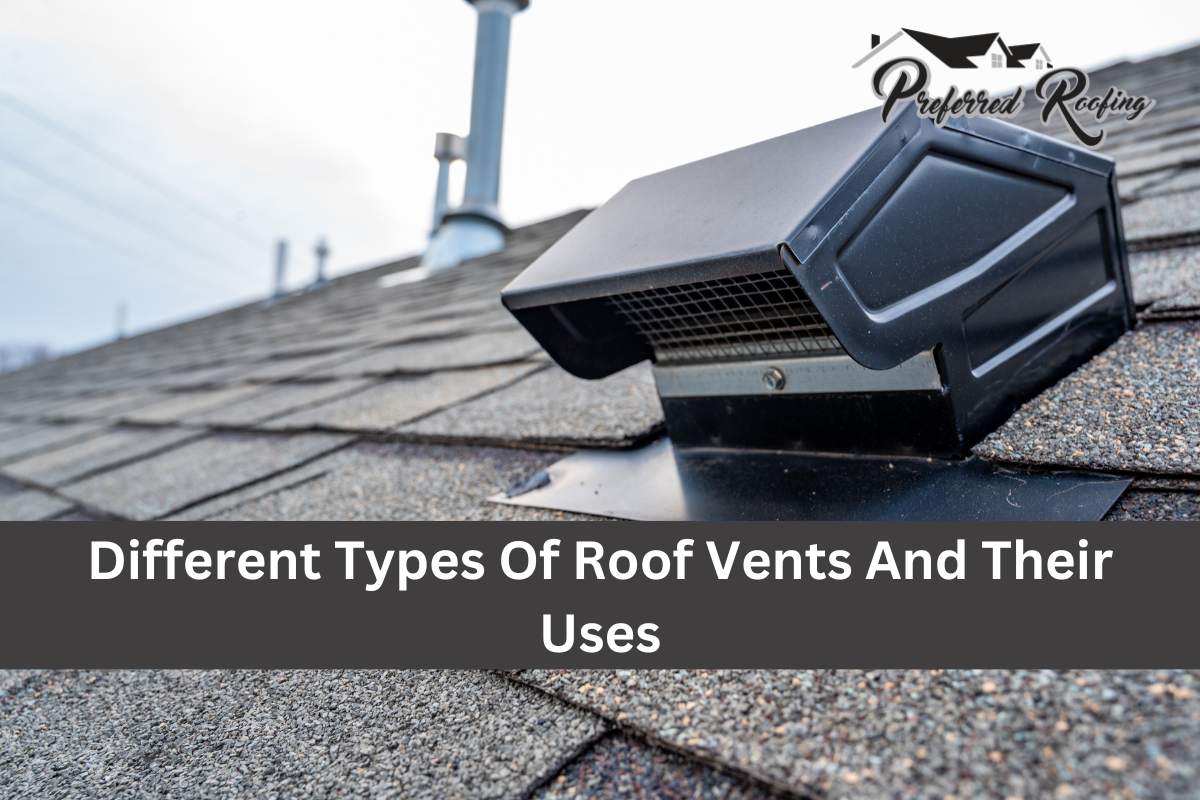Because the roof is one of the most essential parts of every house, any roof accessories you choose must be carefully considered.
One of the roof accessories that you can’t overlook is the roof vents. They’re designed to provide good ventilation to attics, protect your roof, and improve the overall quality of your house.
To know the proper roof vent for your house, we’ve compiled a comprehensive list of different types of roof vents and their uses. After reading, you should be able to choose the best roof vent for your home.
The Different Types of Roof Vents
There are two main kinds of ventilation systems: exhaust and intake vents. Every vent type comes under either of these ventilation systems.
Exhaust vents release hot air from the attic to the atmosphere. If this air isn’t expelled, it can cause mildew and mold, which can affect the condition of your home. Exhaust vents are usually located above the roof line because hot air rises.
As hot air leaves the house, fresh air must come in. This is where intake vents come in—they bring in cool air. These vents are located below the roof line because cold air must come in from below to push out hot air.
Below are the different types of roof vents based on the two ventilation systems.
Exhaust Vents
Here are some of the different exhaust vents for homeowners.
Ridge Vents
Ridge vents, as the name implies, are installed at the top of the roof and run across the entire length of the roof line. This vent’s location at the roof’s highest point places it in the perfect position to release the hottest air in the attic. Plus, its long length expels large amounts of hot air.
There are two types of ridge vents: ridge vents with a baffle and one without a baffle. The former is an active roof vent because it has a baffle, which is a plastic flap that helps channel airflow through the attic.
A ridge vent without a baffle is a passive roof vent. The issue is that the absence of a baffle can allow snow, rain, debris, insects, etc., to get into your attic.
Whether you install a ridge vent with or without a baffle, the best way to make the most out of this vent type is to combine it with an intake vent, like a soffit vent. This will aid vertical ventilation, the natural movement of cold and hot air.
Overall, a ridge vent’s excellent location, the area covered, and affordability are some reasons we highly recommend it.
Box Vents
A box vent is another commonly used exhaust vent; another name is a louver vent. It looks like a small box installed on the roof. Its installation process is relatively easy; it involves cutting out a hole in the roof and fixing the box vent in it.
One box vent isn’t enough to expel hot air, so several are installed across the rooftop for increased efficiency. These boxes are available in different sizes and colors to meet your needs.
Box vents are versatile because, unlike ridge vents that can only be installed across the top of the roof, you can strategically place them in small areas that can’t accommodate ridge vents. Plus, they’re great for complicated roofs with different sections.
Turbine Vents
Turbine vents are sometimes called whirly birds, and their makeup allows attic air to circulate about 10 to 12 times if well-installed. These vents comprise an aluminum covering that houses aluminum blades that rotate when they come in contact with wind from outside the home. This pulls up air from inside the attic and expels it out.
One downside of roof turbines is that the aluminum blades need winds of about 5-6 miles per hour to spin. This means the exhaust system won’t work when there’s little to no breeze. You can imagine how uncomfortable hot summer days will be.
Even with high winds, turbine vents are small and may not pull out enough hot air from the attic space. You can only get the best results if you install more than one roof turbine.
Although the efficiency of this exhaust system is questionable, it still has some benefits. It doesn’t require electricity, making it an eco-friendly device. In addition, it requires little to no maintenance; you only need to add lube to its unit occasionally.
Hard-Wired Powered Vents
These vents are circularly shaped, low-profile vents installed close to the rooftop. As you might have guessed, they use electricity to expel hot air from the attic. Switching on the vent activates a motorized fan that pulls out the hot, humid air.
Besides keeping the attic cool, hard-wired powered vents also minimize humidity that can ruin the drywall and lumber used in the attic. In colder seasons, it’s better to connect your power vent to a humidistat to keep the humidity level in your attic at optimum.
Since hard-wired powered vents are connected to the electrical system in the house, you’ll have to deal with high utility bills. Also, the engines are constantly working, so they’re prone to fail over time. You’ll have to replace the motors after a while.
Solar-Powered Vents
Solar-powered attic vents are the perfect substitute for hard-wired ones because they reduce electricity costs. This is because they generate power from the sun to function.
As great as this may sound, solar-powered vents aren’t without faults. For one, because the motor runs all day, the solar panel can’t hold enough charge to operate the vent throughout. Therefore, you’ll need to charge the battery at some point.
You can’t operate the vents while the battery is charging, so you may need your air conditioner to work for longer hours. This will undoubtedly impact your energy bills. Ultimately, this exhaust type isn’t as cost-effective as you might think.
Intake Vents
These are some of the various intake vents you can find in homes.
Soffit Vents
They’re the most popular intake vents, usually installed with a ridge vent (an exhaust vent). They’re placed directly on the eaves, which you can find right below the roof line.
This kind of vent is available in various designs, but the most popular one features tiny holes for cool air to get into the attic space, which in turn pushes out hot air via the exhaust vet. These holes are small, so you don’t have to worry about animals getting into the house through them.
There are two kinds of soffit vents: individual and continuous soffit vents. Individual soffit vents are small, rectangular-shaped, and installed 5-6 feet apart. This spacing offers less surface area for air to get in.
Continuous soffits, on the other hand, are much longer, and like ridge vents, they run across the length of the eaves. This creates more surface area for air intake. In addition, they’re made of vinyl, so you can always get them in whatever color or texture that’ll complement your home design.
It doesn’t matter what soffit vent you go for; they’re the most efficient intake vent for vertical ventilation.
Gable End Vents
Gable end vents are no longer popular but remain an effective air intake system. They also serve as an exhaust vents because they allow air to flow through one side of the attic and out the other.
This type of vent gets its name from its installation method, which involves installing a vent on both sides of a gable roof. So, you can only have this vent system if you own this roofing type.
The vents are available in different shapes and sizes, but most homeowners use the triangular design. You can also get them in various materials, such as vinyl, wood, and metal, which are the most common.
Gable vents aren’t suitable for homes with complicated roofing styles because other roof parts, like dormers, rafter beams, peaks, and valleys, can disturb the cross breeze. Similarly, you shouldn’t install gable vents with other vertical ventilation systems, like the ridge and soffit vents. The cross breeze from the gable vents will impede air movement through this system.
Drip Edge Vents
Drip edge vents are the alternatives for homes with eaves that can’t hold soffit vents. Drip edges are materials that go directly under the first row of shingles and direct water into the gutters.
To take in air, holes are added to the drip edge or drilled directly into it. This allows cool air to go through the interior roof wall to the exhaust vent at the top of the roof.
You should note that drip edge vents are difficult to install, so you’ll need the services of a professional.
Over-Fascia Vents
This is one of the most recent intake vents and another soffit vent alternative. This vent type is usually installed directly below the starter row of shingles and above the fascia board and gutter.
Unlike soffit vents that get air from the rising, cool air, over-fascia vents draw air when the wind hits the roof. Also, while installed across the entire bottom length of the roof line, they still have a small surface area that doesn’t allow for much air intake.
Conclusion
It’s not difficult to choose the right kind of roof vent for your property as long as you know the different types and how they meet your needs. You can also contact a roofing company for more information about roof vents and their installation.





